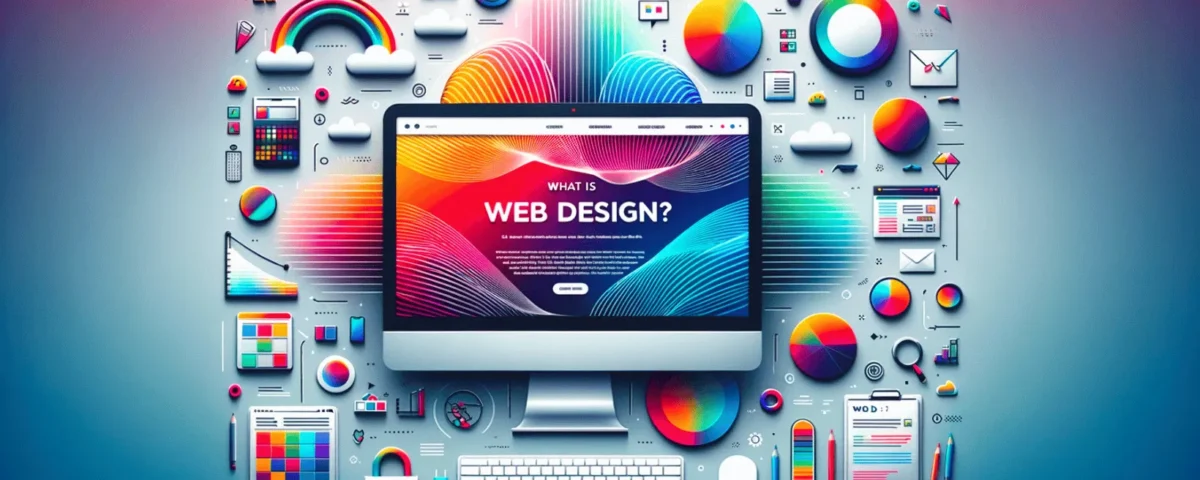The Art and Science of Web Design

The Art and Science of Graphic Design
May 21, 2024
Web Development Services: Elevating Your Online Presence
May 21, 2024The Art and Science of Web Design
Thank you for reading this post, don't forget to subscribe!Web design is a multifaceted discipline that combines creativity and technology to craft engaging and functional websites. In today’s digital age, a well-designed website is crucial for businesses, organizations, and individuals seeking to establish a strong online presence. This blog delves into the history, principles, tools, and future trends in web design, offering insights for both novice and experienced designers.
A Brief History of Web Design
The origins of web design can be traced back to the early 1990s with the creation of the first website by Tim Berners-Lee, the inventor of the World Wide Web. The initial websites were simple, text-based pages with minimal graphics. As technology advanced, so did the complexity and aesthetics of web design.
The late 1990s and early 2000s saw the rise of more visually appealing and interactive websites, thanks to the introduction of CSS (Cascading Style Sheets) and JavaScript. The advent of Web 2.0 in the mid-2000s brought about user-generated content and social media, further transforming the landscape of web design. Today, with responsive design, mobile-first approaches, and the integration of multimedia, web design has evolved into a sophisticated and dynamic field.
Principles of Web Design
Effective web design is grounded in several key principles:
- Usability: A website must be easy to navigate and use. Clear menus, intuitive interfaces, and straightforward content organization are essential for good usability.
- Visual Hierarchy: This principle involves arranging elements to guide the viewer’s eye to the most important parts of the website first. It’s achieved through the use of size, color, contrast, and spacing.
- Responsiveness: With the proliferation of devices and screen sizes, responsive design ensures that a website looks and functions well on desktops, tablets, and smartphones.
- Accessibility: Websites should be designed to be accessible to all users, including those with disabilities. This involves using alt text for images, ensuring proper color contrast, and enabling keyboard navigation.
- Consistency: Consistent design elements such as fonts, colors, and button styles help create a cohesive user experience and reinforce brand identity.
- Load Time: Fast-loading websites are crucial for retaining visitors and improving search engine rankings. Optimizing images, leveraging browser caching, and minimizing code are some ways to improve load times.
Essential Tools for Web Designers
Modern web designers use a variety of tools to create and manage websites. These include:
- Adobe XD: A powerful tool for designing user interfaces and user experiences, offering features for wireframing, prototyping, and collaboration.
- Sketch: A vector-based design tool widely used for UI/UX design, particularly in the development of web and mobile applications.
- Figma: A cloud-based design tool that enables real-time collaboration, making it ideal for teams working on web design projects.
- WordPress: A versatile content management system (CMS) that powers a significant portion of the web, allowing users to create and manage websites with ease.
- Bootstrap: A popular front-end framework that provides pre-designed components and responsive grid layouts to streamline the web development process.
- Sublime Text: A sophisticated text editor for code, markup, and prose, favored by many web developers for its speed and flexibility.
The Role of User Experience (UX) and User Interface (UI) Design
UX and UI design are critical components of web design that focus on the overall experience of the user and the interface they interact with, respectively.
- User Experience (UX) Design: UX design involves researching and understanding the needs and behaviors of users to create a website that is both functional and enjoyable to use. This includes everything from site structure and navigation to the overall flow of the website.
- User Interface (UI) Design: UI design focuses on the look and feel of the website. This includes choosing color schemes, typography, and creating visual elements such as buttons and icons. The goal of UI design is to create an aesthetically pleasing and intuitive interface.
Future Trends in Web Design
As technology continues to evolve, so do the trends in web design. Here are some emerging trends to watch:
- Artificial Intelligence (AI) and Machine Learning: AI is being used to create more personalized and efficient user experiences, such as chatbots and personalized content recommendations.
- Voice User Interface (VUI): With the rise of voice-activated devices, designing for voice interactions is becoming increasingly important.
- Motion Design: The use of animations and transitions to enhance user engagement and provide feedback.
- Dark Mode: Offering an alternative color scheme that is easier on the eyes in low-light environments, dark mode is becoming a standard feature for many websites and applications.
- Minimalism: A design approach that emphasizes simplicity and the use of negative space to create clean, uncluttered interfaces.
- Progressive Web Apps (PWAs): Combining the best of web and mobile apps, PWAs offer fast loading times, offline functionality, and an app-like experience on the web.
Conclusion
Web design is a dynamic and ever-changing field that blends creativity with technical skills to create compelling online experiences. Whether you’re designing a personal blog, an e-commerce site, or a corporate website, understanding the principles of web design, mastering essential tools, and staying abreast of emerging trends are crucial for success. As we look to the future, the integration of new technologies and a focus on user-centric design will continue to push the boundaries of what’s possible on the web. For those passionate about shaping the digital landscape, web design offers a fulfilling and impactful career path.
For more information: www.ecbinternational.com


